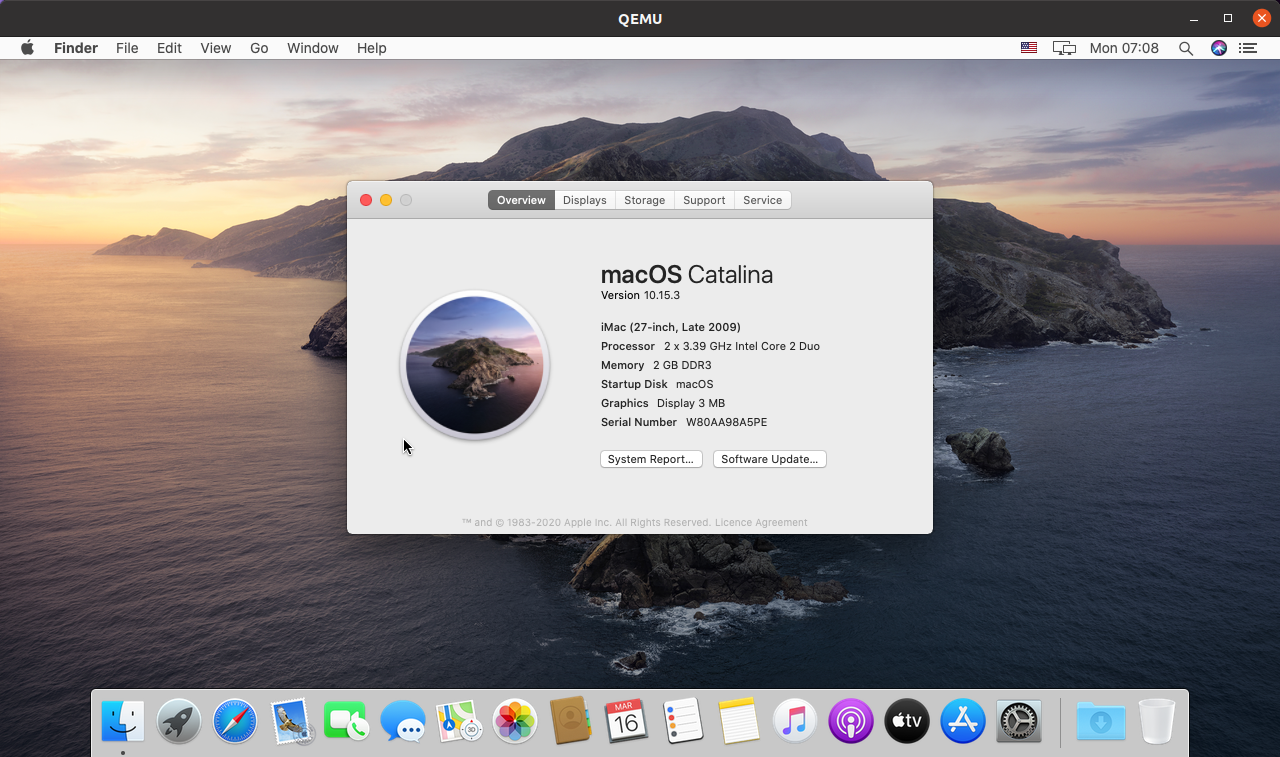

In our case, such programs were continuously forcing the VM to crash or "froze" for minutes. When you finally reach your virtualized Mac's desktop, try launching a relatively more graphics-heavy application than a mere notepad, like a web browser. With those tweaks applied, run your VMWare software and hit "play" on your macOS virtual machine. At the same time, as an OS, it relies heavily on a real Mac's GPU for its hardware-accelerated desktop. The virtualized software's requests are "parsed" by the virtual GPU driver and "fed" to the actual GPU.Īnd that's precisely where the problem lies with the latest macOS: it doesn't come with such drivers for a virtualized GPU. Unlike the rest of the VM, it's not an emulated graphics system instead, the host machine's GPU performs the necessary calculations. The virtual GPU driver allows virtual machines under VMWare and VirtualBox to achieve smooth animations and playback. The Importance of the Virtual GPU Driver for Smoother Sailing It acts as a "tunnel" that connects the virtual machine's software to the host machine's graphic driver. Out of all these drivers, the most important one for a noticeable performance is the virtual GPU driver. One of the tasks those "tools" perform is enabling some of those "passthroughs" in the form of specialized drivers.

To learn more, see the Amazon EC2 FAQs.If you've used VirtualBox or one of VMWare's solutions in the past, you've probably installed one of their "tools" variants in a virtualized OS "to make it perform better". EC2 M1 Mac instances enable Arm64 macOS environments for the first time on AWS, and support macOS Big Sur (version 11) and macOS Monterey (version 12) as Amazon Machine Images (AMIs). These instances deliver up to 60% better price performance over x86-based EC2 Mac instances for iOS and macOS application build workloads. To get started with x86-based EC2 Mac instances, see the Amazon EC2 User Guide.Īmazon EC2 M1 Mac instances are built on Apple M1 Mac mini computers and are powered by the AWS Nitro System. You can choose from Mac instances that can run on macOS Mojave (version 10.14), macOS Catalina (version 10.15), macOS Big Sur (version 11), and macOS Monterey (version 12) as Amazon Machine Images (AMIs). X86-based EC2 Mac instances are built on Apple Mac mini computers, featuring Intel Core i7 processors, and are powered by the AWS Nitro System. You can provision and access macOS environments within minutes, dynamically scale capacity as needed, and benefit from pay-as-you-go pricing. By using Amazon EC2 Mac instances, you can create apps for the iPhone, iPad, Mac, Apple Watch, Apple TV, and Safari. Amazon Elastic Compute Cloud (Amazon EC2) Mac instances allow you to run on-demand macOS workloads in the cloud for the first time, extending the flexibility, scalability, and cost benefits of AWS to all Apple developers.


 0 kommentar(er)
0 kommentar(er)
